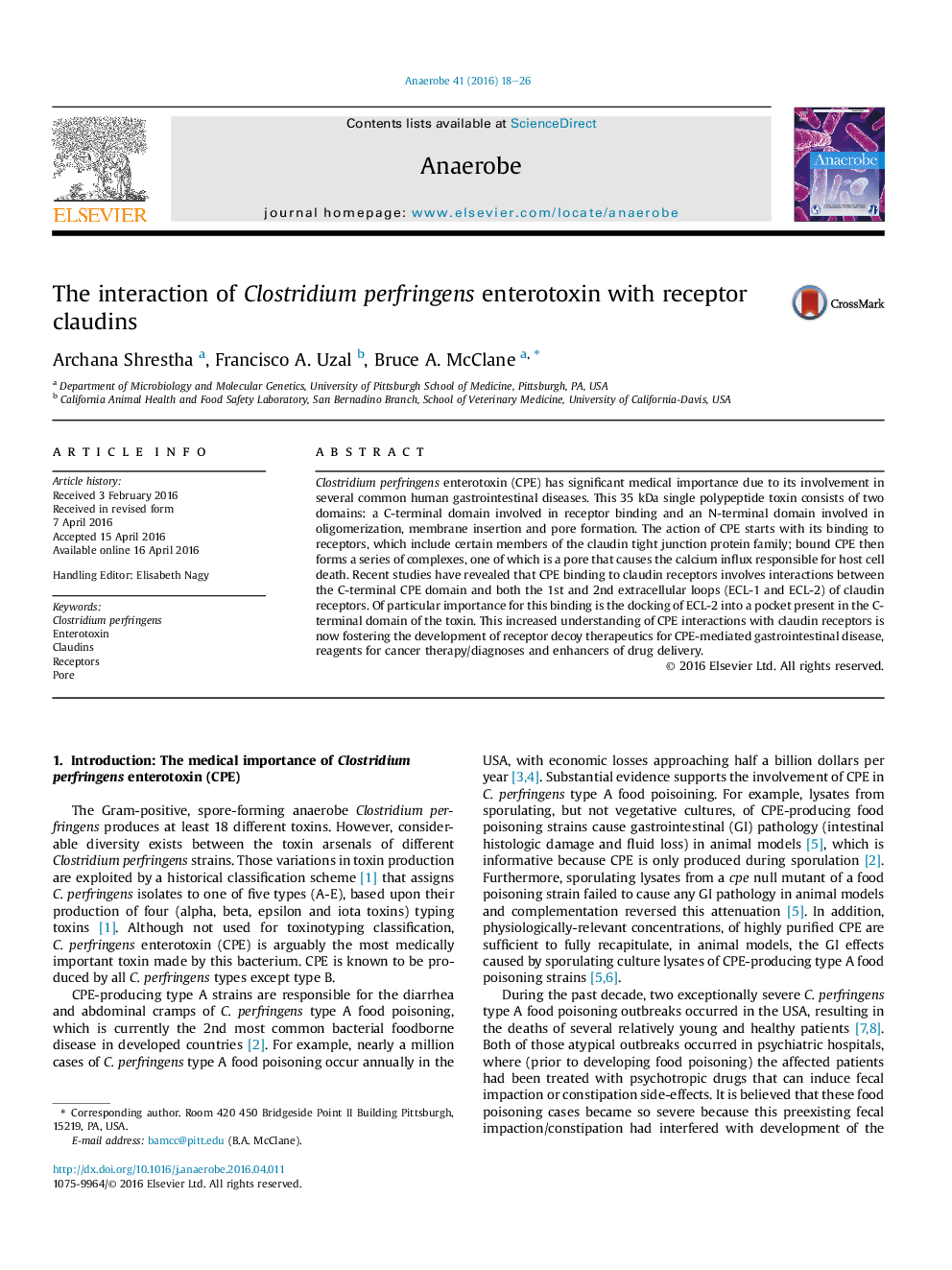| Article ID | Journal | Published Year | Pages | File Type |
|---|---|---|---|---|
| 5671251 | Anaerobe | 2016 | 9 Pages |
â¢An enterotoxin causes C. perfringens type A food poisoning, a common bacterial foodborne disease.â¢On host cells, this toxin binds to extracellular loops on claudin receptors.â¢This toxin oligomerizes into a pore that causes calcium-induced cell death.â¢The toxin, or its derivatives, may be useful for applications like cancer therapy/diagnoses.
Clostridium perfringens enterotoxin (CPE) has significant medical importance due to its involvement in several common human gastrointestinal diseases. This 35Â kDa single polypeptide toxin consists of two domains: a C-terminal domain involved in receptor binding and an N-terminal domain involved in oligomerization, membrane insertion and pore formation. The action of CPE starts with its binding to receptors, which include certain members of the claudin tight junction protein family; bound CPE then forms a series of complexes, one of which is a pore that causes the calcium influx responsible for host cell death. Recent studies have revealed that CPE binding to claudin receptors involves interactions between the C-terminal CPE domain and both the 1st and 2nd extracellular loops (ECL-1 and ECL-2) of claudin receptors. Of particular importance for this binding is the docking of ECL-2 into a pocket present in the C-terminal domain of the toxin. This increased understanding of CPE interactions with claudin receptors is now fostering the development of receptor decoy therapeutics for CPE-mediated gastrointestinal disease, reagents for cancer therapy/diagnoses and enhancers of drug delivery.
